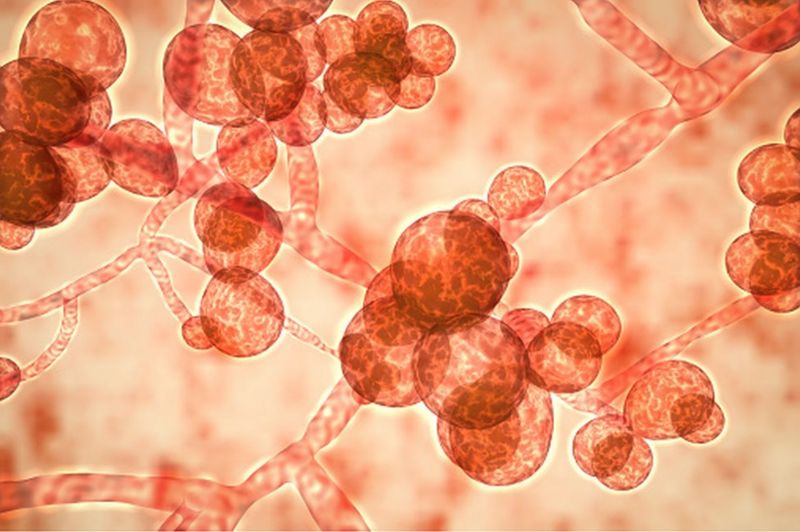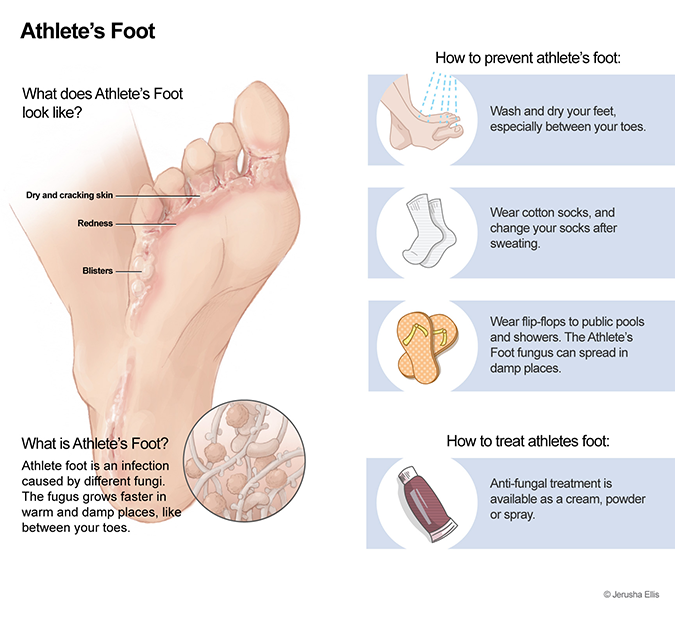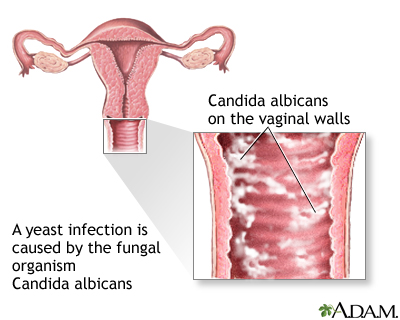Fungal Diseases Study Guide
Introduction
Anyone can have a fungal infection, which can arise in any region of the body. A vaginal yeast infection, a jock with an athlete’s foot, or a newborn with thrush are just a few instances.
A variety of fungi can cause fungal infections.
-
Fungi that aren’t normally present on or inside your body can colonize it and cause an illness in some situations.
-
Fungi typically present on or within your body might proliferate out of control in other instances, resulting in an infection.
-
Infections caused by fungi are infectious, and they can spread from one person to another.
-
Under certain circumstances, the disease-causing fungus can be transmitted from diseased animals or polluted soil or surfaces.
Common types of Fungal Disease
Mycosis is the medical term for a fungus infection. Although most fungi are safe for humans, some of them can cause illness in certain circumstances.
Fungi proliferate by producing spores, which can be inhaled or taken up by direct touch. As a result, fungal infections are most commonly found on the skin, nails, or lungs. Fungi can also enter the epidermis, infect the organs, and produce a systemic illness throughout the body.
The following are examples of common fungal infections:
- Ringworms
- Athlete’s foot
- Yeast infection
- Onychomycosis, fungal infection of the nail
- Jock itch
- Candidiasis
- Pneumocystis pneumonia
- Aspergillosis
Some fungi do not generally cause infections in humans, but they can make people ill if they have a weaker immune system. They’re often called opportunistic infections. For example, Aspergillus spp., Candida spp., and Cryptococcus spp. are the most common fungal infections in organ transplantation patients many of whom are immunosuppressed.
1. ATHLETE’S FOOT
-
Tinea pedis is another name for an athlete’s foot.
-
It’s a fungus that can harm the skin of your feet, as well as your hands and nails.
-
Dermatophytes, a fungus that thrives in the warm and damp spaces between the toes, causes the illness.
-
It’s very frequent among athletes, and it may be passed on from one person to the next. It can also be contracted from contaminated surfaces such as public showers or locker room flooring.
-
Itching, stinging, or burning sensations between the toes or on other foot regions can be caused by the athlete’s foot. It’s also possible for the skin to crack, peel, or blister.
2.JOCK’S ITCH
-
Tinea cruris is another name for jock itch. It’s a fungal illness that affects the skin around the crotch, inner thighs, and buttocks.
-
It’s caused by dermatophytes, a fungus that thrives in warm, humid environments, just like athlete’s foot.
-
This virus primarily affects males and boys, although it can also affect women and girls.
-
Symptoms include redness, irritation, a burning sensation, change in skin tone, flanking of the skin, or a rash that worsens after exercise.
3. RINGWORMS
- A fungal condition that may damage the skin and scalp is ringworm.
- Dermatophytes cause it, just as an athlete’s foot and jock itch.
- Ringworm is a kind of fungus that grows on the skin, especially in wet and humid areas of the body.
-
It generally begins as a crimson, itchy, and scaly rash.
-
Patches of ringworm can spread and develop red rings over time.
Other indicators include:
- spots that get blistered and ooze
- bald spots on the head
- thick, discolored, or broken nails that resemble rings and have a redder exterior edge (if the infection is in the nails)
4. YEAST INFECTION
-
Candida albicans is a fungus that can cause infections in the skin, mouth, gastrointestinal tract, urinary tract, and genitals.
-
Small quantities of Candida albicans on the skin and body are perfectly natural. However, when these fungi increase excessively, they can produce a yeast infection.
-
Oral thrush is a yeast infection that affects your throat or mouth. White spots appear in your mouth and throat when you have thrush. This form of illness is common in people who have been on antibiotics for a long time.
Vaginal yeast infections are rather prevalent in women. They have the potential to cause:
- Itching
- Discomfort
- clumpy discharge
- Swelling
- Redness
5. TOENAIL FUNGUS
A little light-colored patch on the nail is generally the first sign of toenail fungus. It affects the form and color of the nail as it spreads deeper, and it might cause the nail to thicken and become brittle over time.
The following are examples of common signs:
- White or yellow lines under the nail
- Flakiness or cracking of the nail
- Thick or brittle nail
- Pulling from the nail bed
Causes of Fungal Disease
Dampness and humidity:
Sweating profusely or working in a warm, humid atmosphere raises the chances of contracting a fungal infection. Fungi thrive in a warm, wet atmosphere. Walking barefoot in wet areas like gyms, locker rooms, and showers might potentially put you in danger. Fungus spores frequently contaminate these public areas.
Menopausal status:
Hormonal changes in postmenopausal women can help to lower vaginal acidity. You may be more susceptible to vaginal yeast infections due to this.
Suppressed immune system:
If your immune system isn’t functioning correctly, you may be susceptible to fungal infections. A variety of factors might weaken the immune system. Nutrient deficiencies, immunodeficiency illnesses, smoking, and even stress may wreak havoc on the immune system.
Conclusion:
- Fungi are microorganisms that have a material called chitin in their cell walls.
- Some fungi do not generally cause infections in humans, but they can make people ill if they have a weaker immune system (Opportunistic infections).
- A variety of fungi can cause fungal infections. Fungi that aren’t normally present on or inside your body can colonize it and cause an illness in some situations.
- Ringworms are one of the most common fungal infections.
FAQs:
1. What are 5 diseases caused by fungi?
Aspergillosis, Blastomycosis, Candidiasis, Coccidioidomycosis, Pneumocystis pneumonia are a few examples of diseases that are caused by fungi.
2. Which type of fungal infection is most common?
Ringworms are one of the most common fungal infections.
3. What are viral diseases?
Viruses are responsible for common infectious ailments, including the common cold, flu, and warts. They also spread diseases including HIV/AIDS, Ebola, and COVID-19. Viruses function similarly to hijackers, and they infect healthy cells and utilise them to increase and generate more viruses like themselves.
4. Which is the most serious type of fungal disease?
Aspergillus, which causes aspergillosis, is one of the most prevalent forms of fungus that causeS serious or life-threatening illnesses. People with lung illness or a weak immune system are more likely to be affected.
5. What are the 5 characteristics of fungi?
- Fungi are eukaryotic creatures that are non-vascular, non-motile, and heterotrophic.
- They might be filamentous or unicellular.
- Spores are used to replicating.
- Alternation of generation is a phenomenon that occurs in fungi.
- Because fungi lack chlorophyll, they are unable to produce photosynthesis.
We hope you enjoyed studying this lesson and learned something cool about Fungal Diseases! Join our Discord community to get any questions you may have answered and to engage with other students just like you! Don’t forget to download our App to experience our fun, VR classrooms – we promise, it makes studying much more fun! 😎
Sources:
- Fungi Diseases https://flexbooks.ck12.org/cbook/ck-12-biology-flexbook-2.0/section/8.16/primary/lesson/fungi-and-human-disease-bio/ Accessed on 8 Dec 2021
- Types of Fungal Diseases https://www.cdc.gov/fungal/diseases/index.html Accessed on 8 Dec 2021
- Everything You Need to Know About Fungal Infection https://www.healthline.com/health/fungal-infection Accessed on 8 Dec 2021




